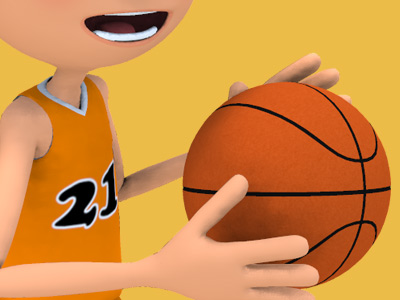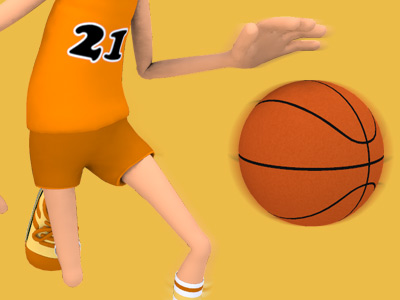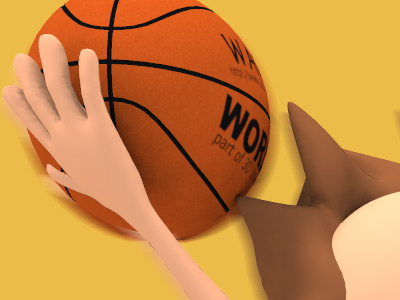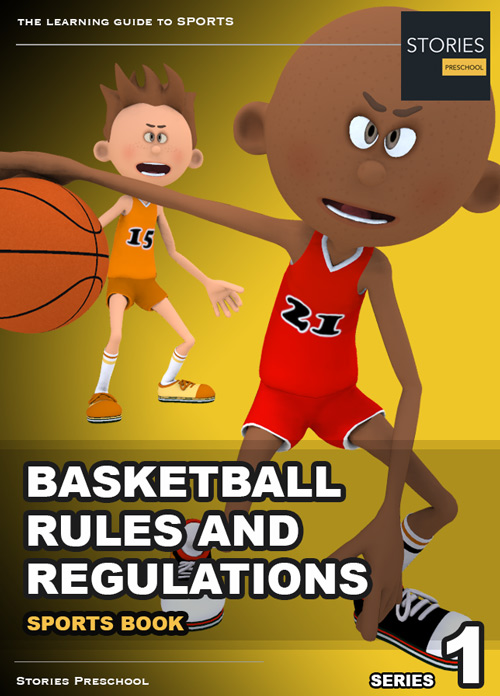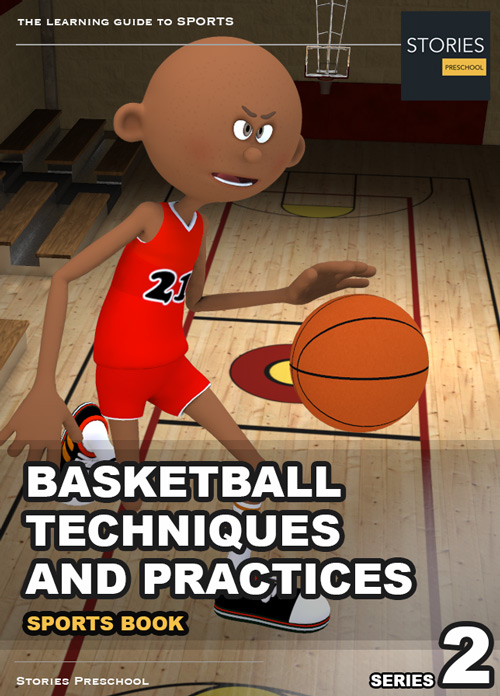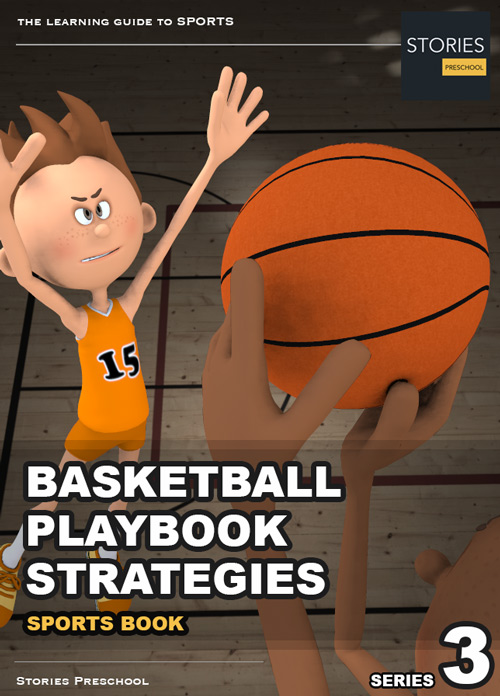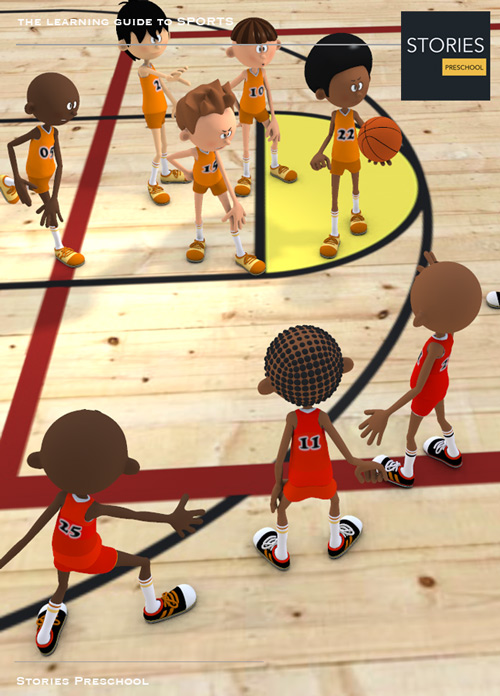Basketball

Basketball Equipment
The only essential equipment in a basketball game is the ball and the court: a flat, rectangular surface with baskets at opposite ends. Competitive levels require the use of more equipment such as clocks, score sheets, scoreboard(s), alternating possession arrows, and whistle-operated stop-clock systems.
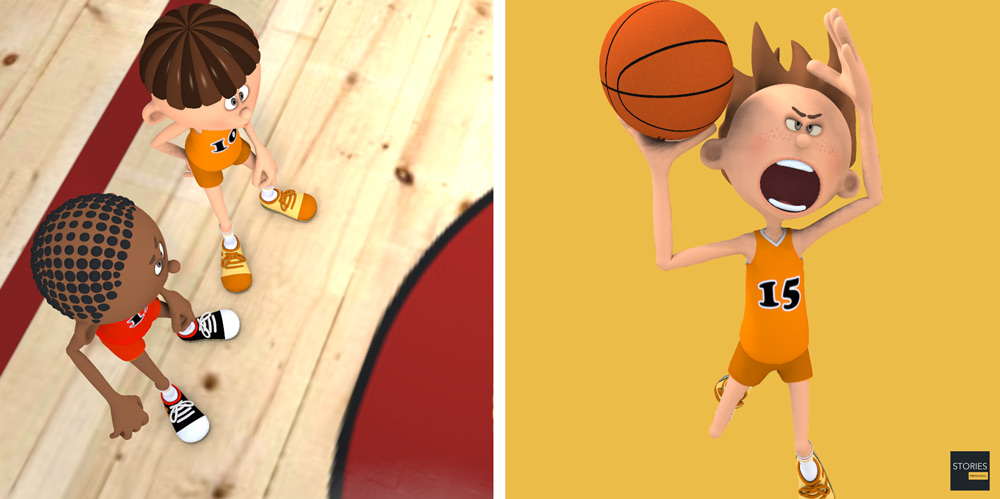
- A basketball is a spherical inflated ball used in a game of basketball. Basketballs typically range in size from very small promotional items only a few inches in diameter to extra large balls nearly a foot in diameter used in training exercises, for example a basketball in high school would be about "27" while a NBA ball would be about "29". The actual standard size of a basketball in the NBA is 9.5 to 9.85 inches (24.1 to 25.0 cm) in diameter.
- A regulation basketball court in international games is 91.9 feet long (28 meters) and 49.2 (15 meters) feet wide. In the NBA and NCAA the court is 94 feet (28.6 meters) by 50 feet (15.24 meters). Most courts have wood flooring, usually constructed from maple planks running in the same direction as the longer court dimension. The name and logo of the home team is usually painted on or around the center circle.
- Half court is a term used in basketball for the middle line of the basketball court. A shot taken from half court, referred to as a half court shot, is a shot taken from beyond the line at center circle.
- The key, officially referred to as the free throw lane by the National Basketball Association (NBA) and the National Collegiate Athletic Association (NCAA), the restricted area by the international governing body FIBA, and colloquially as the lane or the paint, is an area on a basketball court underneath the basket bounded by the endline, the foul line and other lines which are known as freebody lines, that are usually painted (although unpainted on some courts with painted perimeters). It is a critical area on the court where much of the action takes place in a game.
- The basket is a steel rim 18 inches (45.72 cm) diameter with an attached net affixed to a backboard that measures 6 feet (1.82 meters) by 3.5 feet (1.06 meters) and one basket is at each end of the court. The white outlined box on the backboard is 18 inches (45.72 cm) high and 2 feet (60.96 cm) wide. At almost all levels of competition, the top of the rim is exactly 10 feet (3.05 meters) above the court and 4 feet (1.21 meters) inside the baseline. While variation is possible in the dimensions of the court and backboard, it is considered important for the basket to be of the correct height – a rim that is off by just a few inches can have an adverse effect on shooting.
- A breakaway rim is a basketball rim that can bend slightly downward when a player dunks a basketball, and then instantly snap back into a horizontal position when the player releases it. It allows players to dunk the ball without shattering the backboard, and it reduces the possibility of wrist injuries. Breakaway rims were invented in the mid-1970s and are now an essential element of high-level basketball.
- The shot clock is a timer designed to increase the game's pace (and scoring levels). The offensive team must attempt a field goal with the ball leaving the player's hand before the shot clock expires and either touching the rim or entering the basket. If the offensive team fails to register a field goal attempt within the time limit, they are assessed a violation resulting in a turnover to their opponents; if the ball hits or enters the rim after the clock expires, it is not a violation so long as it left the player's hand before expiration.
- A basketball sleeve, like the wristband, is an accessory that basketball players wear. Made out of nylon and spandex, it extends from the biceps to the wrist. It is sometimes called a shooter sleeve or an arm sleeve.
- A finger sleeve is worn by certain basketball players to support and protect their fingers, as well as to enhance grip on the ball during a shot. It is the player's preference on which finger the sleeve is worn. Many choose to wear more than one finger sleeve, such as Reggie Miller. The use of the finger sleeve is authorized and approved by the NBA (National Basketball Association). In many cases the finger sleeve is worn for protection instead of performing some sort of taping job on the digit.
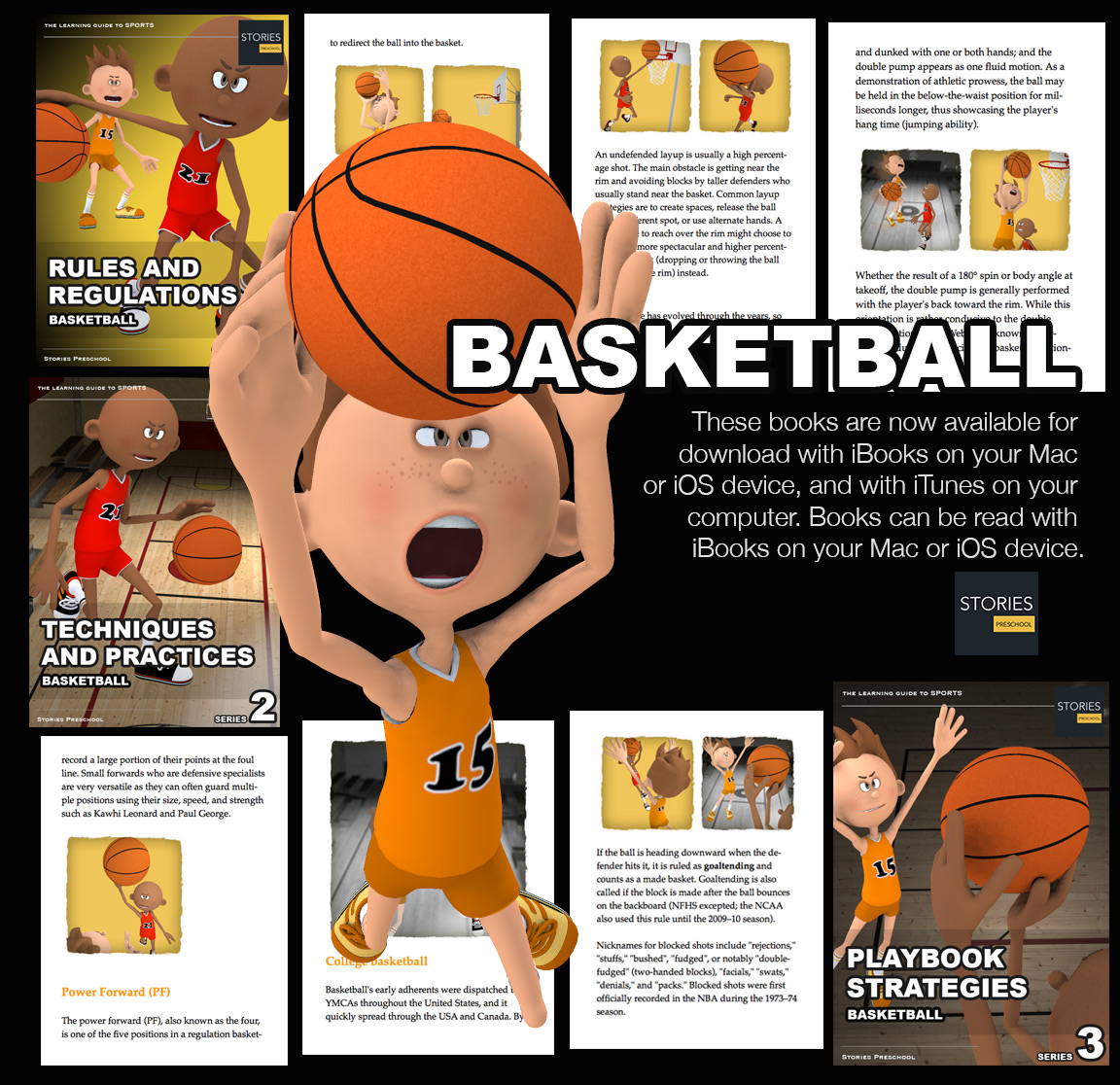
SPORTS
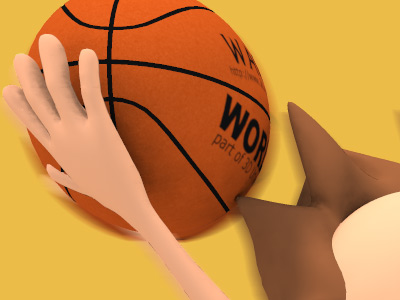
RESOURCES
This article uses material from the Wikipedia articles "Basketball", "Basketball (ball)", "Breakaway rim", "Key (basketball)", "Half court", "Shot clock", "Basketball sleeve", "Finger sleeve", which is released under the Creative Commons Attribution-Share-Alike License 3.0.
© Stories Preschool. All Rights Reserved.
